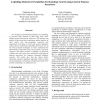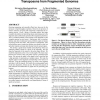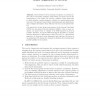1074 search results - page 80 / 215 » Alignment of Non-Overlapping Sequences |
ICPADS
2005
IEEE
14 years 3 months ago
2005
IEEE
New biological experimental techniques are continuing to generate large amounts of data using DNA, RNA, human genome and protein sequences. The quantity and quality of data from t...
BCB
2010
13 years 5 months ago
2010
Growing sequencing and assembly efforts have been met by the advances in high throughput machines. However, the presence of massive amounts of repeats and transposons complicates ...
NAR
2011
13 years 1 months ago
2011
PREX (http://www.csb.wfu.edu/prex/) is a database of currently 3516 peroxiredoxin (Prx or PRDX) protein sequences unambiguously classified into one of six distinct subfamilies. Pe...
NIPS
2004
13 years 11 months ago
2004
Amino acid profiles, which capture position-specific mutation probabilities, are a richer encoding of biological sequences than the individual sequences themselves. However, profi...
COMPLIFE
2005
Springer
14 years 3 months ago
2005
Springer
Abstract. Most software tools in homology recognition on proteins answer only a few specific questions, often leaving not much room for the interpretation of the results. We devel...



